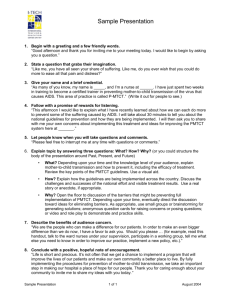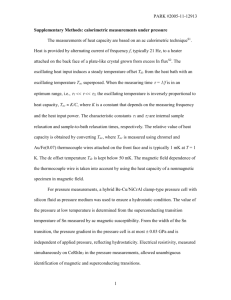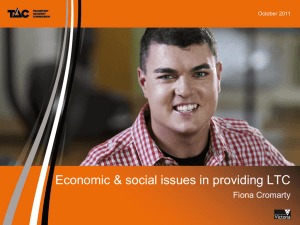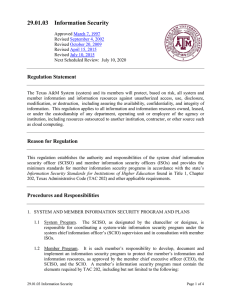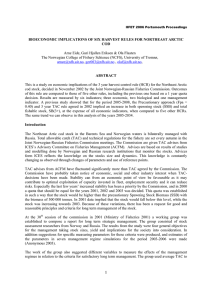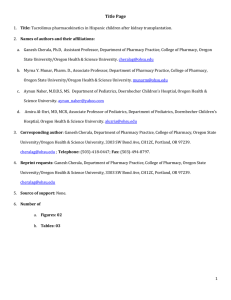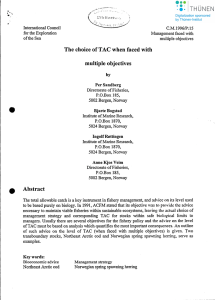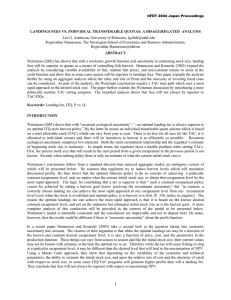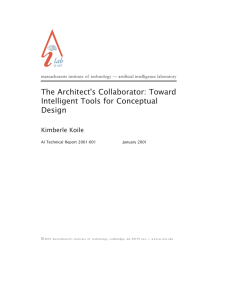Thesis - Poster
advertisement
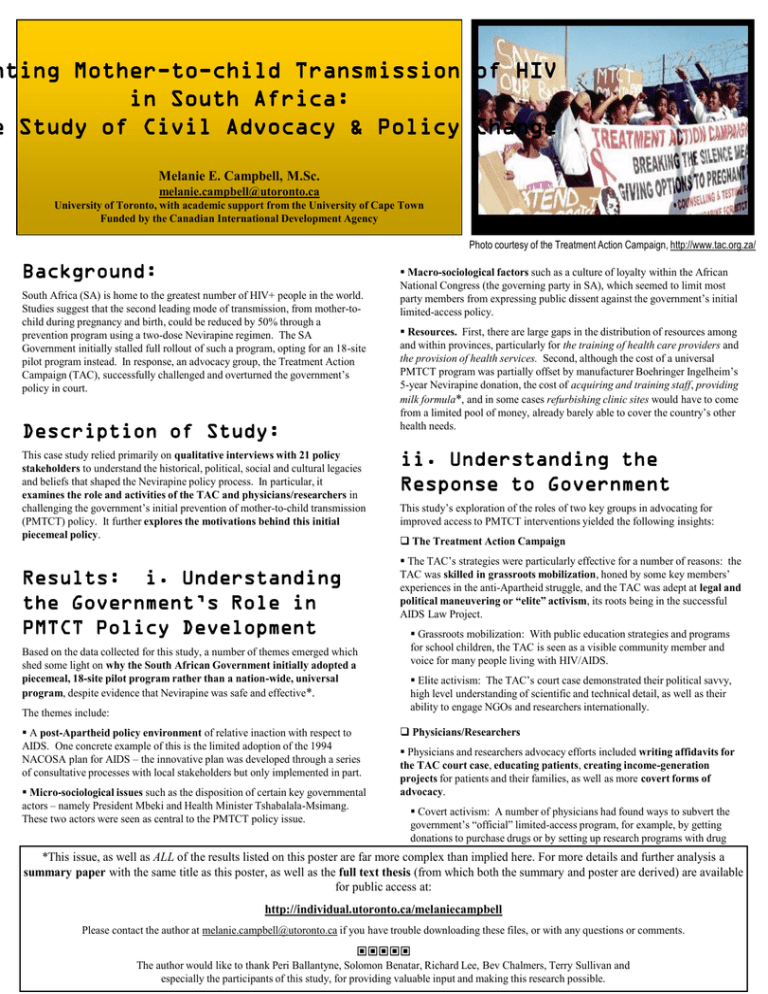
nting Mother-to-child Transmission of HIV in South Africa: e Study of Civil Advocacy & Policy Change Melanie E. Campbell, M.Sc. melanie.campbell@utoronto.ca University of Toronto, with academic support from the University of Cape Town Funded by the Canadian International Development Agency Photo courtesy of the Treatment Action Campaign, http://www.tac.org.za/ Background: South Africa (SA) is home to the greatest number of HIV+ people in the world. Studies suggest that the second leading mode of transmission, from mother-tochild during pregnancy and birth, could be reduced by 50% through a prevention program using a two-dose Nevirapine regimen. The SA Government initially stalled full rollout of such a program, opting for an 18-site pilot program instead. In response, an advocacy group, the Treatment Action Campaign (TAC), successfully challenged and overturned the government’s policy in court. Description of Study: This case study relied primarily on qualitative interviews with 21 policy stakeholders to understand the historical, political, social and cultural legacies and beliefs that shaped the Nevirapine policy process. In particular, it examines the role and activities of the TAC and physicians/researchers in challenging the government’s initial prevention of mother-to-child transmission (PMTCT) policy. It further explores the motivations behind this initial piecemeal policy. Macro-sociological factors such as a culture of loyalty within the African National Congress (the governing party in SA), which seemed to limit most party members from expressing public dissent against the government’s initial limited-access policy. Resources. First, there are large gaps in the distribution of resources among and within provinces, particularly for the training of health care providers and the provision of health services. Second, although the cost of a universal PMTCT program was partially offset by manufacturer Boehringer Ingelheim’s 5-year Nevirapine donation, the cost of acquiring and training staff, providing milk formula*, and in some cases refurbishing clinic sites would have to come from a limited pool of money, already barely able to cover the country’s other health needs. ii. Understanding the Response to Government This study’s exploration of the roles of two key groups in advocating for improved access to PMTCT interventions yielded the following insights: The Treatment Action Campaign The TAC’s strategies were particularly effective for a number of reasons: the TAC was skilled in grassroots mobilization, honed by some key members’ experiences in the anti-Apartheid struggle, and the TAC was adept at legal and political maneuvering or “elite” activism, its roots being in the successful AIDS Law Project. Results: i. Understanding the Government’s Role in PMTCT Policy Development Based on the data collected for this study, a number of themes emerged which shed some light on why the South African Government initially adopted a piecemeal, 18-site pilot program rather than a nation-wide, universal program, despite evidence that Nevirapine was safe and effective*. The themes include: A post-Apartheid policy environment of relative inaction with respect to AIDS. One concrete example of this is the limited adoption of the 1994 NACOSA plan for AIDS – the innovative plan was developed through a series of consultative processes with local stakeholders but only implemented in part. Micro-sociological issues such as the disposition of certain key governmental actors – namely President Mbeki and Health Minister Tshabalala-Msimang. These two actors were seen as central to the PMTCT policy issue. Grassroots mobilization: With public education strategies and programs for school children, the TAC is seen as a visible community member and voice for many people living with HIV/AIDS. Elite activism: The TAC’s court case demonstrated their political savvy, high level understanding of scientific and technical detail, as well as their ability to engage NGOs and researchers internationally. Physicians/Researchers Physicians and researchers advocacy efforts included writing affidavits for the TAC court case, educating patients, creating income-generation projects for patients and their families, as well as more covert forms of advocacy. Covert activism: A number of physicians had found ways to subvert the government’s “official” limited-access program, for example, by getting donations to purchase drugs or by setting up research programs with drug provision as part of the protocol. *This issue, as well as ALL of the results listed on this poster are far more complex than implied here. For more details and further analysis a summary paper with the same title as this poster, as well as the full text thesis (from which both the summary and poster are derived) are available for public access at: http://individual.utoronto.ca/melaniecampbell Please contact the author at melanie.campbell@utoronto.ca if you have trouble downloading these files, or with any questions or comments. The author would like to thank Peri Ballantyne, Solomon Benatar, Richard Lee, Bev Chalmers, Terry Sullivan and especially the participants of this study, for providing valuable input and making this research possible.


